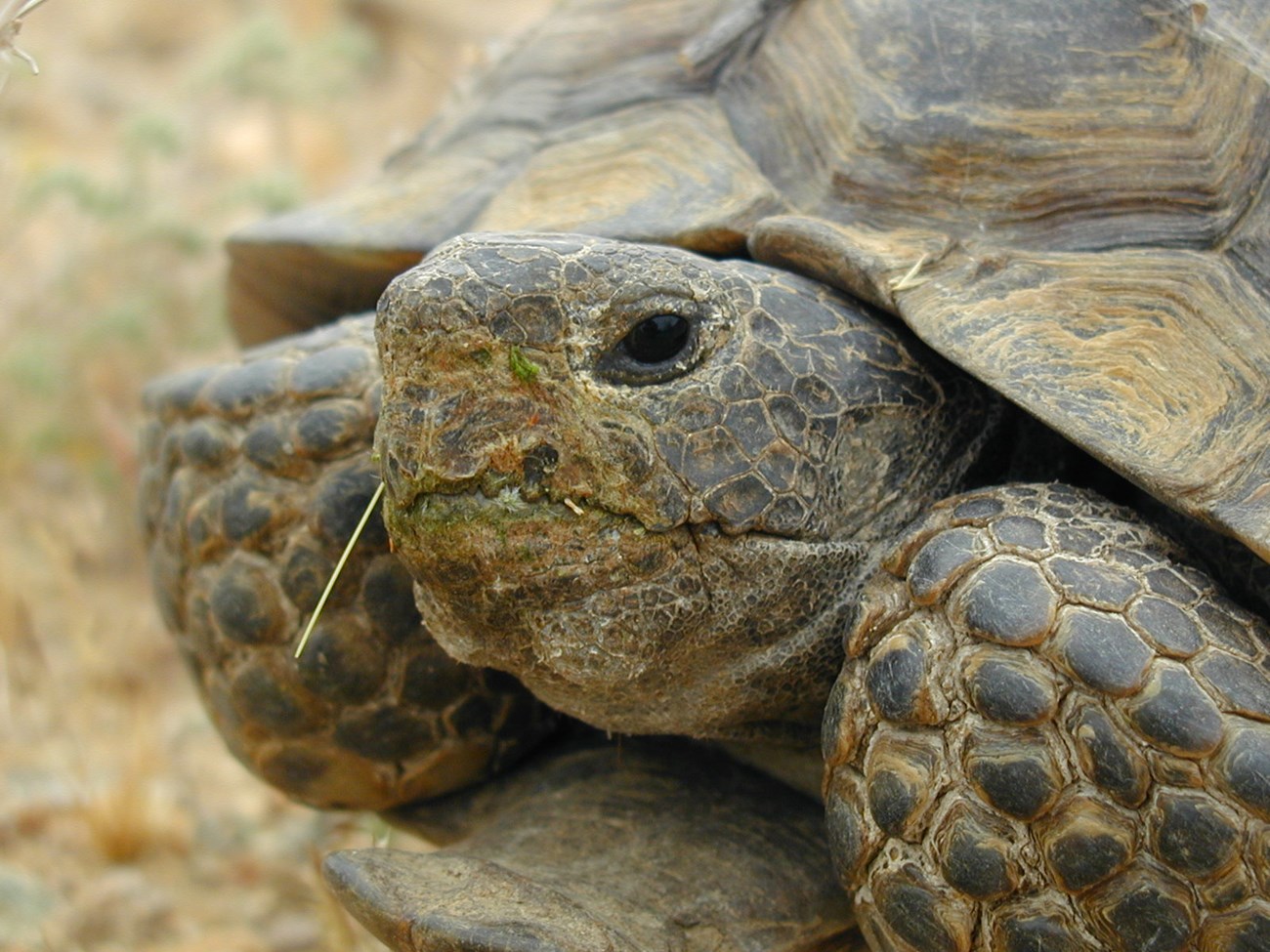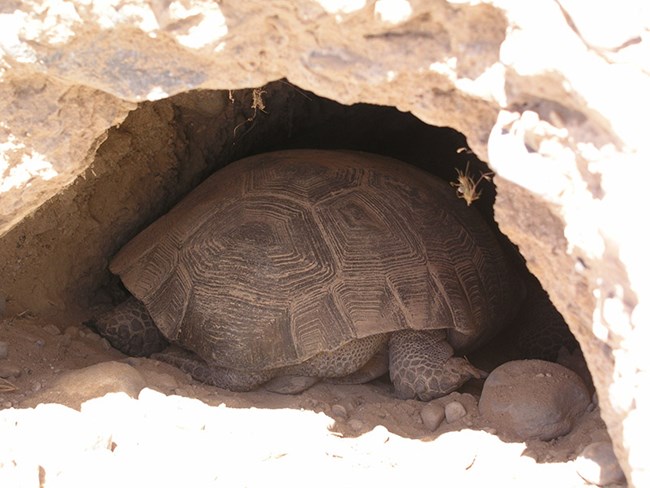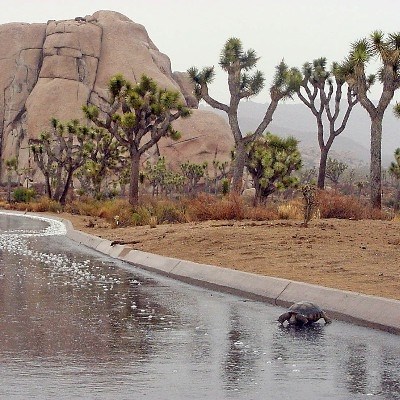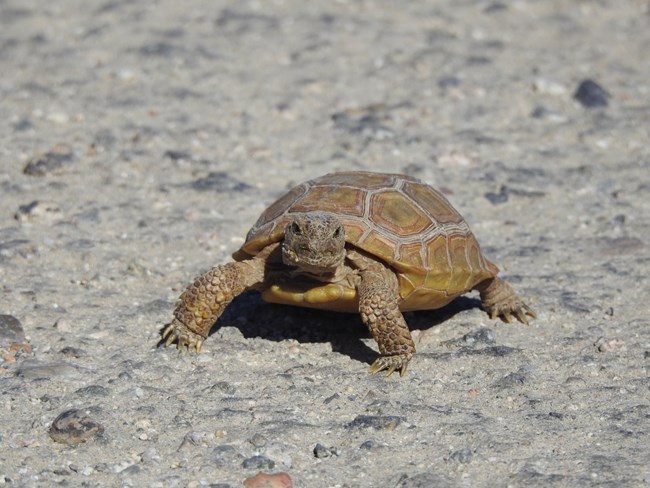
NPS/DEVA As desert towns and cities grow, the lands of Mojave National Preserve become increasingly important as critical Desert tortoise habitat. The Desert tortoise population has been in decline for decades, due to a variety of factors including loss of habitat and disease. In 1990, the Fish and Wildlife Service added this animal to its list of threatened species. The listing requires federal agencies to work together to stabilize Desert tortoise populations. Desert residents and visitors also have an important role to play in the tortoises' recovery.

NPS/LAKE Tortoise LifestylesDesert tortoises live in desert valleys between about 1,000 and 4,000 feet in elevation. Typically they are found in creosote bush, where scattered shrubs provide abundant space for growth of grasses and wildflowers, the favored foods of the tortoise. They spend about 95% of their lives in burrows, emerging to feed and mate during late winter and remaining active through the spring. Tortoises may emerge again after summer storms. Desert tortoises are well adapted to living in a highly variable environment. During prolonged droughts, they retreat to burrows and reduce their metabolism and loss of water while consuming little food. Adult Desert tortoises lose water at such a slow rate that they can survive for more than a year without access to free water. They are able to survive lean years, then grow and reproduce during years of favorable rainfall and forage production. 
NPS/JOTR Tortoises and TrafficTortoises travel long distances in search of food and water and will cross highways through their territory.

NPS/B. Michel Tortoise WatchingAn encounter with a Desert tortoise is a rare treat. Unlike speedy lizards, tortoises move slowly, so you can get a good look at these lumbering reptiles.
Tortoise Collecting is Against the Law 
Reptiles
Mojave National Preserve has 36 documented reptile species. Reptiles are cold-blooded. Jury's out on if they're warm hearted. Discover Life in the Desert
How many lil' birdies are in the preserve? What's that baby rat thing doing at my campsite? Download your own species checklist here. |
Last updated: March 21, 2022
